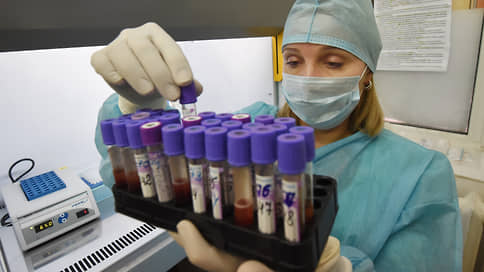In Russia, following China and the United States, cases of mycoplasma pneumonia have been recorded
[ad_1]

Cases of pneumonia caused by the atypical bacterium Mycoplasma pneumoniae have been recorded in Russia, Rospotrebnadzor warned. Ill children and adolescents were identified, in particular, in Karelia, Udmurtia, Bashkiria, and Dagestan. The Ministry of Health claims that the situation is “absolutely manageable.” Meanwhile, outbreaks of mycoplasma infection, starting in China, reached the USA, Denmark, France and the Netherlands. Doctors urge not to panic and remind that in the post-pandemic period, airborne infections, including mycoplasma, are returning to the arena.
On Tuesday, the press service of Rospotrebnadzor reported that isolated cases of mycoplasma infection have been recorded in the country. In particular, there has been an increase in hospitalizations of children for pneumonia caused by the bacterium Mycoplasma pneumoniae in Karelia. Over the past two months, 45 children over the age of one year have been admitted to the infectious diseases hospital of the republic. The Minister of Health of the Republic, Mikhail Okhlopkov, said that 13 children are currently receiving treatment for mycoplasma pneumonia, eight of them in hospital. He named fever, weakness and a prolonged cough as characteristic symptoms.
According to Mr. Okhlopkov, the reason for the increase in incidence is that mycoplasma pneumonia has taken the place of coronavirus.
The press service of the Ministry of Health of Udmurtia also reported to Kommersant that over ten months, 11 cases of mycoplasma infection were recorded in the republic: the sick were “mostly teenagers.” The departments of Rospotrebnadzor of Dagestan and Bashkortostan noted that isolated cases are detected, and severe cases are not recorded in patients.
These statements came amid a surge in cases in the United States, Denmark, France and the Netherlands. An increase in hospitalizations for mycoplasma pneumonia was also reported in Italy and Germany. China was one of the first to sound the alarm. In November it became known that hospitals in Beijing and Liaoning were filled with sick children. The WHO asked the Chinese authorities for detailed information, and later assured that they did not see pandemic potential in the outbreak. Representatives of the organization emphasized that mycoplasma pneumonia is a seasonal disease characteristic of the winter period.
Infectious disease specialist at the Doctis telemedicine service Tatyana Kogut says that mycoplasma infection affects children over 5 years of age and adolescents, as well as young people and adults. For older people, she said, the infection is usually not dangerous.
Olga Shuppo, scientific director of the Grand Clinic network of immunorehabilitation and preventive medicine clinics, clarifies that children are more susceptible to mycoplasma infection simply because they have not yet encountered it. According to the doctor, the pathogen can “settle” in the body, but strong immunity will suppress it without revealing a clinical picture. And in a weakened body, bronchopulmonary complications are possible.
According to Tatyana Kogut, mycoplasma infection is by no means a new phenomenon: “Before the covid pandemic, it was quite active for several seasons, there were surges in the fall, classes in schools and departments in companies were closed for quarantine. Now, post-pandemic, airborne infections, including mycoplasma, are returning to the arena. We should no longer be surprised that after the pandemic, all infections – whooping cough, pneumonia and others – overlap each other and cause a similar picture of a general increase in morbidity.” The causative agent of this disease, the doctor continues, is an “interesting pathogen” that occupies an intermediate position between viruses and bacteria. The infectiousness is quite high in close contact, so the incidence spreads quickly in groups – school classes, kindergartens, offices. The incubation period ranges from one to four weeks, which explains the spread of the outbreak.
Evgeny Gvozdik, a physician-therapist at the medical technical company “Doctor Nearby,” clarifies that the main danger of mycoplasma pneumonia in children lies in the difficulty of differential diagnosis (the ability to distinguish): initial therapy with antibacterial drugs for “ordinary” pneumonia may not bring results, and only after that can one suspect an “atypical” pathogen, which, in turn, can lengthen the time for making the correct diagnosis and the correct treatment tactics. “The selection of antibacterial therapy should also be made taking into account the fact that the pathogen is atypical—this is the second difficult point in the case of mycoplasma infection. Treatment is prescribed by the attending physician based on the clinical picture and examination results. Antibacterial drugs are prescribed, as well as symptomatic treatment,” says Mr. Gvozdik.
But in general, Tatyana Kogut continues, this is “pneumonia carried on the legs”: “That’s what they call it – walking pneumonia, walking pneumonia, and it is easily treatable. Only people from risk groups are hospitalized.”
Commenting on the increased public attention to outbreaks of infection, Ms. Kogut says that microbes behave in nature quite “stereotypically” and such increases in incidence were characteristic of mycoplasma every three to five or eight years. Opportunities for its spread, the doctor points out, exist everywhere, regardless of geography, and its identification is a matter of laboratory decoding. “We receive information about the spread when these cases are recorded. The clinical picture of mycoplasma infection does not have any specific features, it resembles ordinary respiratory diseases, so the outbreak is reported in regions where laboratory diagnostics are well developed, patients are given PCR tests that confirm the diagnosis, notes Tatyana Kogut. “In other regions it is simple outbreaks of morbidity, and among the pathogens there is also, most likely, this infection, but it is not isolated.”
The Ministry of Health assured that the morbidity situation is manageable. According to Minister Mikhail Murashko, the diagnosis, course of the disease and clinical picture are clear, and there are enough drugs for treatment.
[ad_2]
Source link








